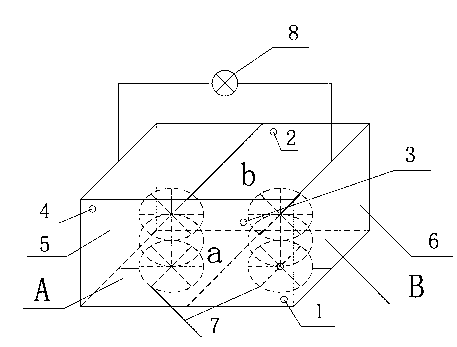Method and device for simultaneously carrying out wastewater treatment and power generation by using photocatalysis associated microbial fuel cell technology
A fuel cell and microorganism technology, which is applied in the field of photocatalysis and synergistic microbial fuel cell technology to treat sewage while generating electricity, can solve the problems of low COD removal rate, complex structure and low power generation in wastewater, and achieves simple structure, low treatment cost, and increased power generation. The effect of electricity production
- Summary
- Abstract
- Description
- Claims
- Application Information
AI Technical Summary
Problems solved by technology
Method used
Image
Examples
Embodiment Construction
[0024] The present invention will be further described in conjunction with the accompanying drawings and specific embodiments, but the present invention is not limited thereto.
[0025] The electrodes used in the following embodiments: the outer walls of the negative and anode chambers are connected to the conductive fillers in the respective chambers as the electrodes of the microbial fuel cell, wherein the outer walls of the cathode chamber are conductive glass coated with titanium dioxide (n-type semiconductor), and the outer walls of the anode chamber are coated with titanium dioxide (n-type semiconductor). The walls are conductive glass coated with silicon dioxide (p-type semiconductor). Both the cationic membrane and the anionic membrane were purchased from Japan Asahi Glass Company; except for the conductive glass, the shell material of the reaction device was plexiglass.
[0026] see figure 1 , the device has MFC anode chamber A and MFC cathode chamber B. Conductive...
PUM
 Login to View More
Login to View More Abstract
Description
Claims
Application Information
 Login to View More
Login to View More - R&D
- Intellectual Property
- Life Sciences
- Materials
- Tech Scout
- Unparalleled Data Quality
- Higher Quality Content
- 60% Fewer Hallucinations
Browse by: Latest US Patents, China's latest patents, Technical Efficacy Thesaurus, Application Domain, Technology Topic, Popular Technical Reports.
© 2025 PatSnap. All rights reserved.Legal|Privacy policy|Modern Slavery Act Transparency Statement|Sitemap|About US| Contact US: help@patsnap.com

